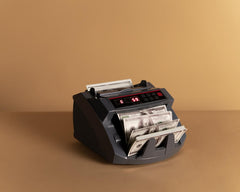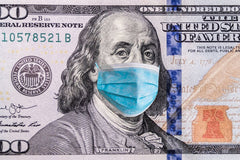Your cart is currently empty.

- May, 30 , 17
- 0 comments
Coin Capers
Coin Capers
IN THE TRADITION of that great classic book, “101 Uses for a Dead Cat” [1] we present some interesting and unexpected alternate uses for pennies, nickels and dimes, and quarters.
Alternate Use #1: Door Retainer.
How often have you been frustrated by a building exit door that won’t stay open, or a screen door with an over-enthusiastic spring-closer? Especially when you need to move apartments? Now, here is a way to keep that pesky door open while you use both hands to carry stuff. You will need a door-holder device – however, it will only cost a quarter. In fact, it is a quarter.
Hold the springy door open and place the quarter edge-on on the gap between the door frame and the edge of the door, close to the hinge. This is, the coin should not be laid flat in the gap, but turned on its edge, so it will be as wide as possible in the gap. Now, SLOWLY release the door until it rests on the quarter and held open by the quarter. By jamming the coin deeper and deeper into the gap, you can open the door wider and wider. It does take some skill and experimentation to get this to work, and a few tries when the coin will fall out. And, oh yeah, do be careful to not bump the door as you carry out the couch. The door will close on you at just the worst possible time.
Alternate Use #2: The “Long Dime”.
When I was younger, many years ago, and very broke, we kids had a thing we called a “long dime”. There were no cellphones of course, and we were reliant on payphones to report in to our parents. Long dimes were a way to keep the cost of payphone calls under control.

To manufacture a Long Dime, one needs a dime (standard kind), a long piece of cotton thread - about 10 inches, and some Scotch Tape. Wrap the cotton once around the dime and tape it in place with as little Scotch as possible. Now it is a LONG dime. To use it, gently ease the dime part into a payphone slot while holding it back with the thread. Now lower the dime carefully using the thread until you hear a “click” in the earpiece; then jank it back a couple of inches. Lower the Long Dime down again to the “click” and now you have 20c credit! This worked for years and years until Bell got wise. They added some sort of mousetrap down the coin slot and once the dime passed a certain point, “bam” and that dime ain’t coming back.
Alternate Use #3: Pennies from Heaven, Washers from Pennies
I lived a while in a certain British Colony in my youth, where the currency there was still English Pounds and Pence. The pennies were copper, large, and had a hole in the center. No kidding, a ¼” hole in the center! They must have been about an inch in diameter, or slightly more.
The hole in the middle was actually an ancient idea and very clever. It seems to have originated in the 1600’s in Poland, where the Jewish bakers would stack bagels (another clever invention) by threading them on a long stick. This gave them an easy way to transport a big stack of bagels to their customers by hand. The hole could be used to thread string or dowels through groups of bagels, allowing for easier handling and transportation and more appealing seller displays. That’s how the bagel got its hole. True story [2]. The hole in the penny made it similarly easier to stack pennies in a roll, and to keep them from falling out you’re your pocket.
Anyway, it turned out that these copper pennies were very suited to use as roofing washers. At that time our house had a tin roof, galvanized iron actually. The sheets of metal were nailed to the rafters with long galvanized nails and large washers. The galvanizing was to prevent rusting. My dad used the “holy pennies” to replace the galvanized roofing washers, as they were cheaper, much cheaper! (They were also better at resisting rust too, being copper).
Alternate Use #4: The Penny Measuring Stick
Need a ruler in a pinch? Pennies are uniformly minted with a 0.75” diameter. Line up 16 cents end to end on a flat surface, and you have exactly one foot. Stack those 16 cents into a neat pile, and you have close to an even inch (0.96 inches, to be exact.) [3]. Very useful, if you happen to have 16 pennies.

Alternate Use #5: The “Killer-Copper” (not Cop-Killer) Bug Killer for only a Penny
Now this an important use, with many ramifications, and will become widely used as more and more people find out that copper has some very strong anti-bacterial properties. You heard it here first. The healing anti-bacterial property of copper was probably known before people knew about bacteria, but has only recently been re-discovered. Recent studies (2008) [5] have shown that copper surfaces kill E. coli very effectively. (Copper kills all other bacteria too, but this was not the focus of this particular study). Over 99% of E. coli microbes are killed after just 1–2 hours on copper surfaces. On stainless steel the microbes survive for weeks! Scientists are still trying to figure out how killer-copper kills bacteria (note, this is different to a cop-killer), but they can show repeatedly and consistently that kill it does. As pure speculation, I think the large size of the copper atom, added to the ease with which it makes bonds to protein molecules, disrupts the biological function of the bacterial cell walls.
As a result, copper has been registered at the U.S. Environmental Protection Agency as the first solid antimicrobial material [4] .
Even more important, many Gram-positive bacteria (e.g: Bacilli and Clostridia) form spores (“endospores”), which are like tiny eggs waiting to hatch into new bacteria when the environment again becomes conducive to infecting you. While waiting to attack you, these spores are extremely difficult to kill. They survive heat, radiation, desiccation, chemicals cleaners – everything! They are a nightmare for operating theatres.
What does work, is our friend killer-copper. It kills bacteria AND spores, dead. How about that? Simple, cheap and effective.
Now, any USA penny dated 1909-1982 will be 95% copper. They have unfortunately since switched to 97% zinc. I won’t accept the liability, try this at your own risk, but if you are stuck on a desert island without antibiotic, and you tape a copper penny or two over that infected wound, who knows?
For this use alone, I would keep some of the old pennies in your purse or pocket at all times.
Alternate Use #6: The Penny Plant Protector
This is probably a side-effect of Use #5, above, but when your favorite plant develops a slug infestation, place a ring of copper pennies shallowly buried around the plant. Many gardeners swear this keeps the slugs at bay [3], and they have some good scientific research to back this claim.
Alternate Use #5: Magic Tricks
Here is way to impress your friends and astound the public. A clean penny spun on its edge, will land tails-up a staggering 80 percent of the time [3]. Why? The extra mass of the head side shifts the coin's center of balance, bringing heads down first. But beware, FLIPPING a penny will result in it landing on either side 50% of the time, i.e. randomly.

I hope you have enjoyed these interesting and unexpected alternate uses for pennies, nickels, dimes, and quarters; and that you will remember us when you need to count your coins - CARNATION ENTERPRISES, Bill Counters & Coin Counters.
- Remember, before you can make every dollar count, you have to count every dollar –
- If everyone in America bought a red car, then America would be a red carnation! –
- (That riddle is here so that you will find it easy to remember us – CARNATION ENTERPRISES)
References:
-
[1] “101 Uses For A Dead Cat”, by Simon Cooper, 1998 Random House
- See also the history of this book at http://www.independent.co.uk/news/obituaries/simon-bond
- [2] Columbia University NYC24 New Media Workshop website History of the Bagel: The Hole Story
- [3] http://www.rd.com/home/cleaning-organizing/penny-uses/
- “(9 brilliant uses for your spare pennies)”
- [4] US Environmental Protection Agency, reg. no. 82012-4, Feb 29,2008
- [5] Antimicrobial efficacy of copper surfaces against spores and vegetative cells of Clostridium difficile
- Wheeldon LJ, Worthington T, Lambert PA, Hilton AC, Lowden CJ, Elliott TS
- Journal of Antimicrob Chemother. 2008 Sep; 62(3):522-5
Search
Custom Menu
Recent Post
Archive
- April 2022
- September 2021
- August 2021
- July 2021
- March 2021
- February 2021









